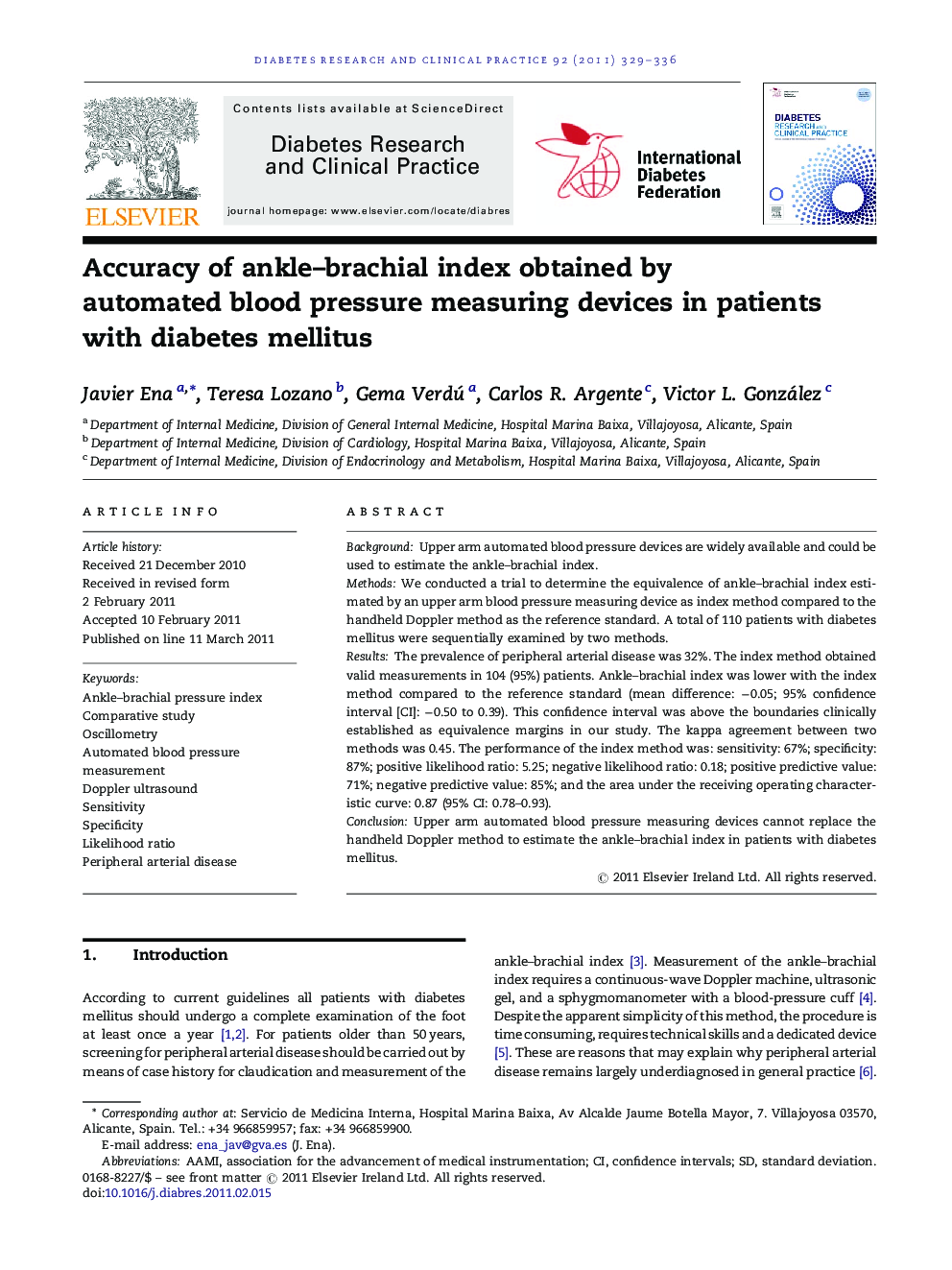| Article ID | Journal | Published Year | Pages | File Type |
|---|---|---|---|---|
| 2797250 | Diabetes Research and Clinical Practice | 2011 | 8 Pages |
BackgroundUpper arm automated blood pressure devices are widely available and could be used to estimate the ankle–brachial index.MethodsWe conducted a trial to determine the equivalence of ankle–brachial index estimated by an upper arm blood pressure measuring device as index method compared to the handheld Doppler method as the reference standard. A total of 110 patients with diabetes mellitus were sequentially examined by two methods.ResultsThe prevalence of peripheral arterial disease was 32%. The index method obtained valid measurements in 104 (95%) patients. Ankle–brachial index was lower with the index method compared to the reference standard (mean difference: −0.05; 95% confidence interval [CI]: −0.50 to 0.39). This confidence interval was above the boundaries clinically established as equivalence margins in our study. The kappa agreement between two methods was 0.45. The performance of the index method was: sensitivity: 67%; specificity: 87%; positive likelihood ratio: 5.25; negative likelihood ratio: 0.18; positive predictive value: 71%; negative predictive value: 85%; and the area under the receiving operating characteristic curve: 0.87 (95% CI: 0.78–0.93).ConclusionUpper arm automated blood pressure measuring devices cannot replace the handheld Doppler method to estimate the ankle–brachial index in patients with diabetes mellitus.
